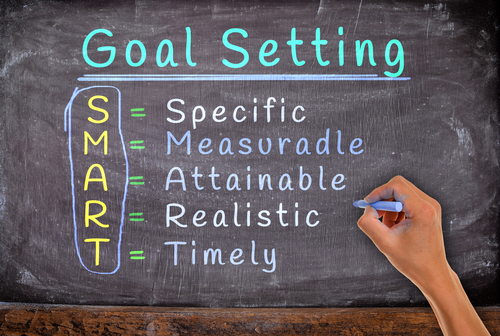
After I wrote one of my first decluttering books, I realised that when I decluttered any part of my house, I used the same process. It’s one that I learned as a nurse and was similar to the coaching process and a learning tool developed by MindMap expert Tony Buzan, called TEFCAS (Try, Event, Feedback, Check, Adjust, Success). It’s a simple process: Assess -> Plan -> Implement -> Evaluate -> Reassess…
Assessment
In the assessment phase, take a step back and think about the room that you want to declutter. What do you want it to look like when it’s finished? This is a really important step, because it clarifies your goal, what you are aiming to achieve when you’re done.
Take, for example, your bedroom. When you visualise your bedroom in your mind’s eye:
- What does it look like?
- What does it smell like?
- What colours can you see?
- What about light/lighting?
- How will it feel, being in that room?
- What styles/themes most appeal to you?
House Beautiful has over 100 design ideas that you can look at, and my Pinterest board includes links to lots of different sites with ideas.
You also need to analyse what you use your room for: sleep, reading, watching tv etc, and who you share your bedroom with, so you can work out what needs to be in your room.
Now, look at your room as it is. What needs to change?
- Room layout
- Furniture
- Furnishings
- Colour
Now you’re clear on where you are now, and where you want to be, let’s set some goals. These may be in terms of:
- decluttering your wardrobe
- decluttering your drawers
- decluttering under the bed
- re-organising your room
- re-decorating your room
Planning
A goal without a plan is just a wish – Antoine de Saint-Exupery
Now that we have a start point and an end point, what we need to do now is create a very clear roadmap of how we are going to get there. If you used SMART goals, you will have considered:
- your timeline
- the tools needed to get you there
- what obstacles you might encounter
- what help you’ll need to get the job done
- how you’ll break the job down into smaller manageable goals for example: declutter wardrobe, declutter room, clear room, paint/decorate room, add furniture, add furnishings, organise wardrobe, organise storage.
Also think about:
- what tasks you will have
- how much time each task will take
- how much money you’ll need to complete the project
- who you can rope in to help
Now that you have a goal and an action plan for your project, the next stage is Implementation.
Implementation
This is where you get off your bum, and actually do stuff!
Evaluation
Note: You may want to do this at the end of the project or as each task is done.
Evaluation is a process of reflecting on where you are now compared to where you want to be. If your goal was to create a bedroom that was warm and cozy, is that what you achieved? Sometimes, when you’ve finished, you find that you’re where you expected to be, but it doesn’t quite feel right, in which case you need to analyse why that is. What needs to be tweaked or adjusted to get you to this new place? Now go back to the beginning and set new goals and action plans and see what effect that has. Repeat until you’re exactly where you want to be.
Once your room feels right, then you have successfully achieved what you set out to. So, then you can reflect on:
- What worked?
- What didn’t work?
- What did you learn?
- How can you use what you learned in the future?
The last stage in the clutter coaching process is maintenance.
Maintenance
You’ve decluttered and reorganised your room to get it exactly the way you want it to be, so now you need to consider what you’re prepared to commit to to maintain it.
For example, what 3 things can you commit to on a daily, weekly or monthly basis? You may want to consider:
- how often should you be tidying up i.e. returning things to their rightful place
- your cleaning schedule
- rules for bringing in new things to your room
- how often you’ll want to review your room as a whole. Things change, circumstances change. Has your room adapted to this change?
That’s my Clutter Coaching process. You can apply it to any room in the house, any space, or if you’re using the KonMarie technique, then any group of items.
Take care for now.
Karen x
